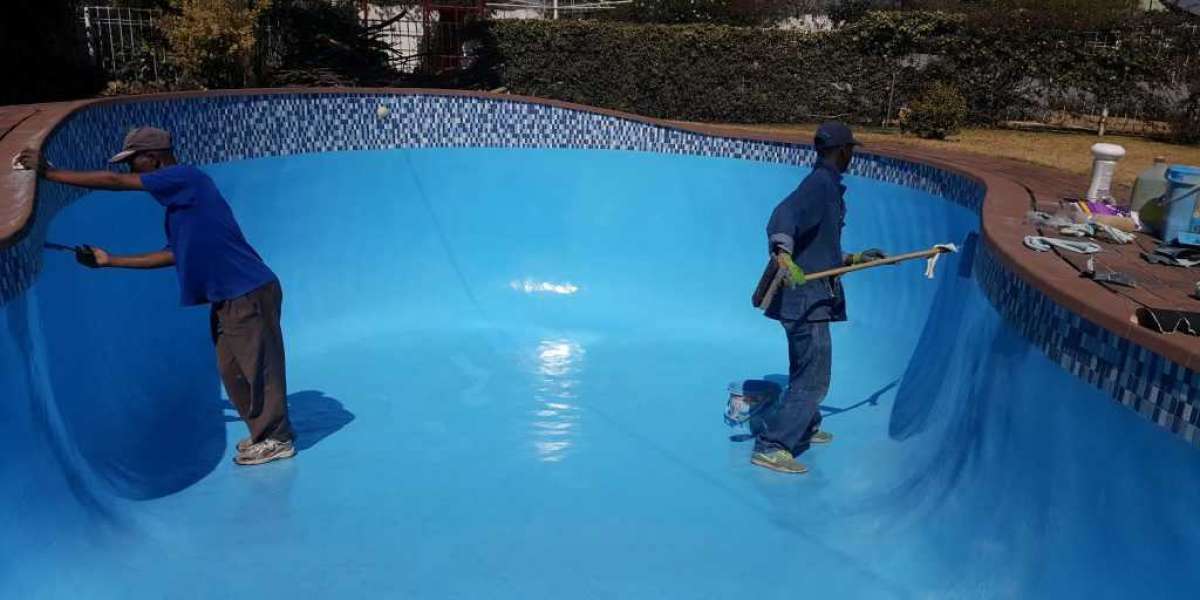Owning a swimming pool is a delightful luxury that provides endless hours of relaxation, fun, and exercise. However, maintaining a pool isn't just about keeping the water clean; it's also about ensuring the pool's interior surfaces are in top condition. This is where pool plaster comes in. This article dives deep into the world of pool plaster, covering everything from the different types to maintenance and repair tips.
What is Pool Plaster?
Pool plaster is a critical component in the construction and maintenance of swimming pools. It is the final coating applied to the pool shell, providing a watertight seal and a smooth, appealing finish. Historically, traditional white plaster was the go-to choice for many pool owners, known for its classic look and affordability.
Types of Pool Plaster
Traditional White Plaster
Traditional white plaster, also known as marcite, is made from a mixture of white cement and marble dust. It’s valued for its smooth texture and reflective properties, giving the pool water a sparkling blue appearance.
Aggregate Plaster
Aggregate plaster includes materials like quartz, pebbles, or glass beads mixed into the plaster. This type of plaster not only enhances durability but also offers a variety of aesthetic options.
Quartz Plaster
Quartz plaster combines white cement with crushed quartz, resulting in a stronger and more resilient surface. It’s available in a range of colors and provides a smooth, attractive finish.
Pebble Plaster
Pebble plaster incorporates small, smooth pebbles, creating a textured, non-slip surface. This type of plaster is highly durable and resistant to chemicals and staining.
Polished Pool Finishes
Polished finishes involve applying and then buffing smooth aggregates, resulting in a shiny, elegant surface that’s both durable and visually stunning.
Benefits of Pool Plaster
Durability
Quality pool plaster can last for many years with proper maintenance, making it a cost-effective choice for pool owners.
Aesthetic Appeal
With various colors and textures available, pool plaster can significantly enhance the look of your pool, matching any design preference.
Customization Options
Pool plaster allows for extensive customization, from traditional white finishes to vibrant, colored aggregates.
Cost-Effectiveness
Compared to other pool finishes, plaster is relatively affordable and offers excellent value for the money.
The Pool Plastering Process
Prepping the Pool
Before applying plaster, the pool must be drained, and the surface cleaned and prepped. This may include removing old plaster, patching cracks, and ensuring the surface is smooth.
Applying the Plaster
The plaster is mixed and then applied using specialized tools. It’s crucial to work quickly and efficiently to ensure an even application.
Curing Time and Process
After application, the plaster needs time to cure, which typically takes about a week. During this period, the pool should be filled with water and maintained at proper chemical levels to ensure a smooth finish.
Choosing the Right Pool Plaster
Factors to Consider
When choosing pool plaster, consider factors like your budget, desired aesthetic, and the pool’s usage. Different types of plaster offer varying levels of durability and maintenance requirements.
Comparing Different Types
Compare the pros and cons of each plaster type to determine which best suits your needs. For example, while traditional white plaster is affordable, pebble plaster offers superior durability and a unique look.
Maintaining Pool Plaster
Regular Cleaning Tips
Regularly brush and vacuum your pool to prevent dirt and algae buildup. This helps maintain the plaster’s appearance and extends its lifespan.
Balancing Pool Chemistry
Maintaining balanced water chemistry is crucial for the longevity of your pool plaster. Regularly test and adjust pH, alkalinity, and calcium hardness levels.
Preventing Common Issues
Address issues like staining or rough spots promptly to prevent them from worsening. Using a sequestering agent can help prevent mineral buildup and staining.
Common Problems with Pool Plaster
Staining
Stains can occur due to metals in the water or organic materials like leaves. Regular cleaning and proper chemical balance can help prevent this.
Cracking
Cracks can develop over time due to shifting ground or improper maintenance. Minor cracks can be repaired, but extensive cracking may require replastering.
Discoloration
Discoloration can result from improper water chemistry or algae growth. Regular maintenance and proper chemical balance are key to preventing this.
Roughness
Rough spots can develop due to improper application or wear and tear. These areas can often be smoothed out with an acid wash or light sanding.
Repairing Pool Plaster
DIY vs. Professional Repairs
While minor repairs can be done yourself, significant issues like extensive cracking or delamination should be handled by professionals.
Steps for Minor Repairs
For small cracks or rough spots, use a pool plaster repair kit. Clean the area, apply the plaster mix, and smooth it out.
When to Replaster Your Pool
If your pool plaster is significantly worn or damaged, it may be time to replaster. Signs include excessive roughness, widespread staining, and extensive cracking.
Cost of Pool Plastering
Initial Costs
The cost of pool plastering varies based on the type of plaster and the size of your pool. Traditional white plaster is the most affordable, while aggregate finishes are more expensive.
Long-Term Value
Investing in quality plaster can save you money in the long run by reducing the need for frequent repairs and maintenance.
Factors Affecting Cost
Factors like the complexity of the job, the condition of your pool, and your location can affect the overall cost of plastering.
Longevity of Pool Plaster
Expected Lifespan
Pool plaster typically lasts between 7 to 15 years, depending on the type and maintenance.
Extending the Life of Your Plaster
Proper maintenance, including regular cleaning and balanced water chemistry, can help extend the lifespan of your pool plaster.
Eco-Friendly Pool Plaster Options
Sustainable Materials
Look for plaster made from eco-friendly materials that have a lower environmental impact.
Energy-Efficient Practices
Consider using energy-efficient practices during the plastering process, such as minimizing water waste and using environmentally friendly products.
Trends in Pool Plaster
Popular Colors and Designs
Current trends include bold colors and unique textures, allowing for personalized and visually striking pool designs.
Innovations in Materials
Advancements in materials and technology are leading to more durable and visually appealing pool plaster options.
FAQs
How often should pool plaster be replaced?
On average, pool plaster should be replaced every 7 to 15 years, depending on the type and maintenance.
Can I plaster my pool myself?
While minor repairs can be DIY, plastering an entire pool is a complex job best left to professionals.
What is the best type of pool plaster?
The best type depends on your needs and budget. Quartz and pebble plasters are known for their durability and aesthetic appeal.
How do I prevent stains on my pool plaster?
Regular cleaning, balanced water chemistry, and using a sequestering agent can help prevent stains.
Is pool plaster eco-friendly?
Some plaster types use eco-friendly materials. Look for options that prioritize sustainability and energy efficiency.
Conclusion
Pool plaster is a crucial aspect of maintaining a beautiful and functional swimming pool. By understanding the different types, benefits, and maintenance practices, you can ensure your pool remains in top condition for years to come. Regular upkeep and timely repairs will help you enjoy a pristine swimming environment, enhancing the overall experience.








